
AROUND THE WORLD
ROYAL NAVY HARBOUR DEFENCES - CANADA
The main places associated with indicator loops in Canada were:
- St John
- Antisubmarine School at Digby (Nova Scotia)
- Prince Rupert (Port Edward)
If
you worked there or have any feedback please contact me:
Dr Richard Walding
Research Fellow - School of Science
Griffith University
Brisbane, Australia
Email: waldingr49@yahoo.com.au
LINKS TO MY RELATED PAGES: Indicator Loops around the World (Home Page) How an indicator loop works
PRINCE EDWARD ISLAND
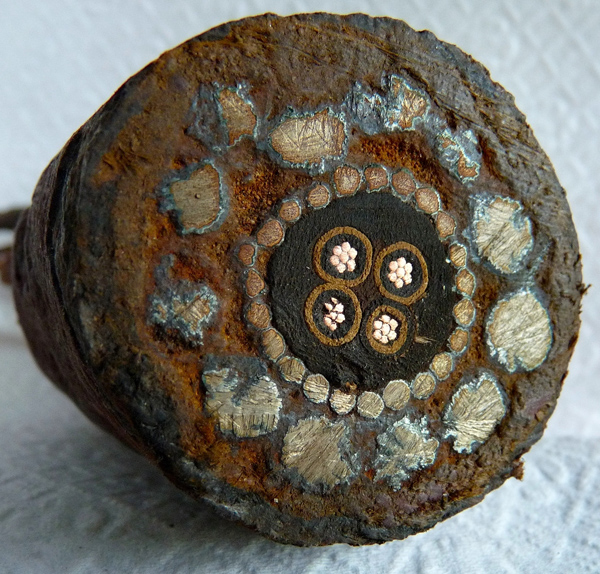 |
| Canadian cable: 4-Core 7-strand Admiralty Indicator Loop cable found on the shore of Cape Traverse in Prince Edward Island, Canada by Philip Pilgrim, Hammonds Plains, Nova Scotia in 2014. The 4-cores are embedded in black rubber and protected by 22 lead-sheathed armour wires. Surrounding this is a layer of hemp (probably) and 12 lead-sheated armour wires about 2 mm diameter each. The outer protection seems to be more hemp and wound by tarred jute. The lead added extra weight to make the cable conform to the sea floor better. However, in this case, the lead looks fairly thin so may have been more for insulating the steel against salt water corrosion. [Philip Pilgrim] |
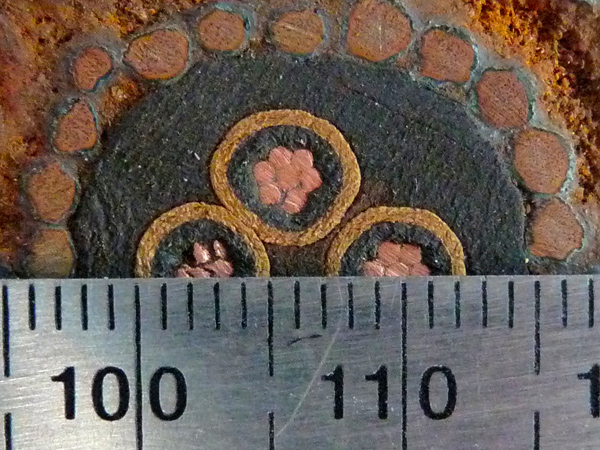 |
| Canadian cable: The 7-strand copper wires (0.029", 0.8 mm) in each of the 4-cores can clearly be seen. This is similar to the Admiralty Pattern 9610 (below) which was a 4 core, 7 strand, 0.029" cable used for loop tails but didn't have the extra layer of 12 armour wires. [Philip Pilgrim] |
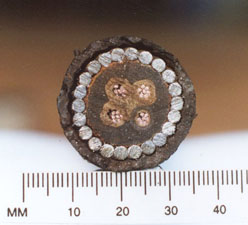 |
 |
| Australian sample: The ADM Patt. 9610 was a 4 core, 7 strand, 0.029" cable used for loop tails. It was made by Johnson & Phillips (UK) in 1941. It has a diameter of 25 mm. This cable was often used on the shore end of rocky landings. [Richard Walding] | Australian sample (Bribie Island): The longitudinal section of Patt. 9610 shows the four central cores insulated with 5 mm diameter rubber (3 are white, one black), surrounded by 18 mm diameter rubber bedding. Also visible is the 25 mm wide cotton gauze around the rubber; the central square white rubber core (not visible) and the 22 strand steel armour. [Richard Walding] |
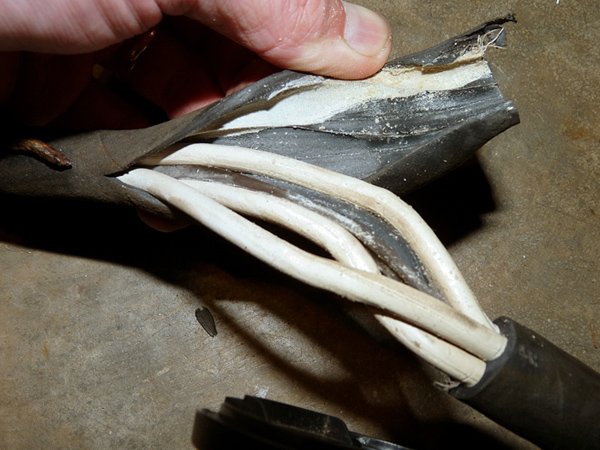 |
Canadian cable: The four cores in their rubber casing. [Philip Pilgrim] |
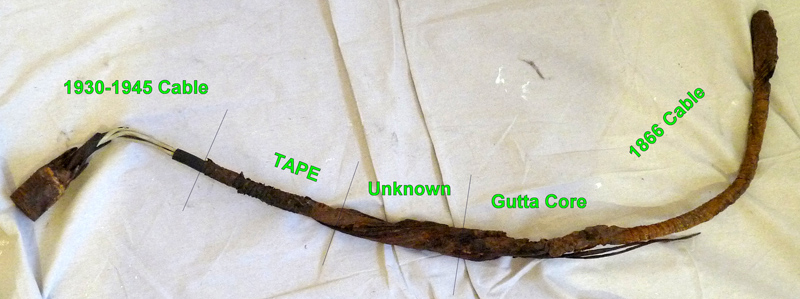 |
The cable above was found spliced into some older cable.Not quite sure why. [Philip Pilgrim] |
For an interesting account of recovering indicator loops from September 1944-46 please see My Life Aboard HMCS Sackville by Patrick Onions. It details the recovery of harbour defence material from Sydney, Halifax and St John, New Brunswick, Canada.
,
If you have any feedback on this webpage, including photos or details, please email me -
Dr Richard Walding - at waldingr49@yahoo.com.au